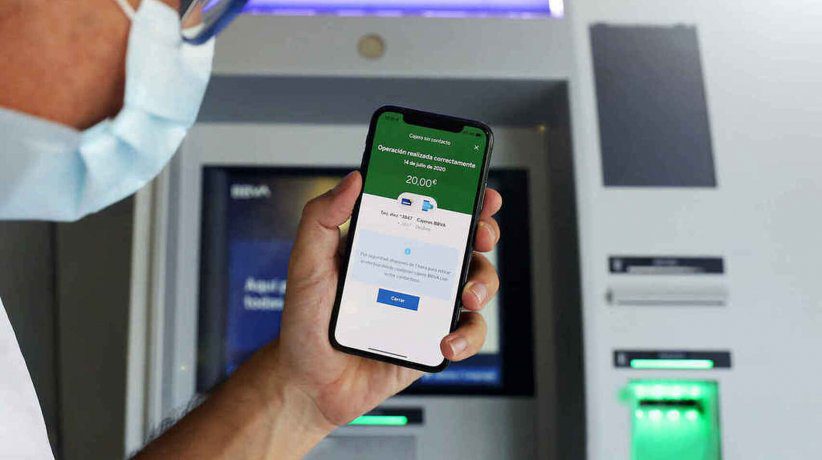
Forbes Argentina Magazine | October 29, 2020
The study sought to identify how satisfied banks are with their digital channels, what number and variety of services they are currently capable of providing in this way, and what strategies they are going to implement in the next 12 months.
This occurs in a region where the percentage of people with access to banking services is too low. Only in 7% of the countries, more than 75% of the population have access to banking services, while in the US, 91% of people have access to banking services and use digital channels.
The study, carried out between August and September, in which 130 bankers from 83 different sized institutions participated seeks to identify the level of satisfaction of banks with their digital channels, the number and variety of services banks are able to currently offer via their digital channels, and the strategies that are going to be implemented in the next 12 months.

The most common measure to promote digitization was the launching of advertising campaigns to promote the use of digital channels, along with educational campaigns or App downloads in many cases. “This shows how relevant communication and tools for automation and segmentation of messages are,” the report states.
Likewise, 47% of banks incorporated digital account opening processes, since it is an issue that has been on the table for years, but there were obstacles of different kinds, among them, some regulations from governments and superintendencies, which made implementation difficult. The report specifies that with the Covid-19 pandemic and these difficulties, new features such as the acceptance of digital signatures made it possible for banks to offer this new product within few weeks.
Chatbots, as a measure implemented by 28% of banks, also played a fundamental role in reducing the congestion of call centers, which were totally overloaded.
In Retail Banking, the priority is to offer new products digitally. Corporate Banking prioritizes payroll payments and administration while pursuing the incorporation of multiple transfers, which are very relevant today.
Digital Transactions
The initiatives formulated are in line with the current image. There is a large growing opportunity with the type of transactions that can be digitized in all of the banks of the region.
In 25% of banks, it is still not possible to carry out completely online transactions. 38% of banks allow credit or debit card applications and 39% of them allow loan applications. In any case, 75% of banks indicated they would increase services during the pandemic.

Transactions per region
The Caribbean was the region that registered the lowest growth in digital transactions, while the Southern Cone registered the greatest growth, with 11% of the banks that achieved an increase in transactions greater than a 100%.
Regarding the objective for the next 12 months, almost a quarter of all banks will seek to renew their digital channels to provide a more modern experience, while 22% of them will seek to go completely digital. Also, 20% of banks will expand their functionalities.
Priorities vary in different regions
- The main objective for the Andean Region is to generate a higher level of digital sales, and becoming a 100% digital bank is in the third place.
- For the Southern Cone, achieving a 100% digital transformation is not within the top three priorities, and generating more digital sales is in the third place.
- For the Central America Region, the most important objective is to go completely digital, followed by increasing functionalities and then renewal of channels.
- For the Caribbean region, the three main priorities are channel renewal, 100% digital bank transformation and expansion of functionalities.
Main challenges
Internal cultural issues are addressed as a great obstacle when changes are implemented. These are mostly promoted by innovation areas, although the business or technology areas are involved in 33% of cases.
Satisfaction with digital channels.
The perception of the banks involved is that the region is falling behind as to the services offered via these channels. Only 17% of banks surveyed are extremely satisfied with their web channel performance. As regards mobile channel performance, the percentage is even lower, as only 9% of banks are completely satisfied with the solutions they currently offer. 42% of banks still do not have a conversational channel.
Measures to alleviate financial pressure
The main measures taken by banks were payment refinancing and the deferral of debt due dates. The Southern Cone region was the one which implemented the highest number of measures emphasizing low interest rates, in contrast to the other regions.
82% of banks refinanced payments. Central America was the region with the highest number of banks that implemented this measure, reaching the 85%. It was also the region with the greatest percentage of overdrafts, with 21% of banks enabling this operation.
Post-Covid strategies
- The Southern Cone is the region with the least expected budget increase for digital channels in 2021. Central America is the region with the most expected budget increase.
- 92% globally plan a budget increase for digital channels, reaching 98% in Central America.
- The Andean region has the largest number of banks that already have a post-COVID strategy. Between 20 and 25% of banks still do not have a strategy in this regard.





